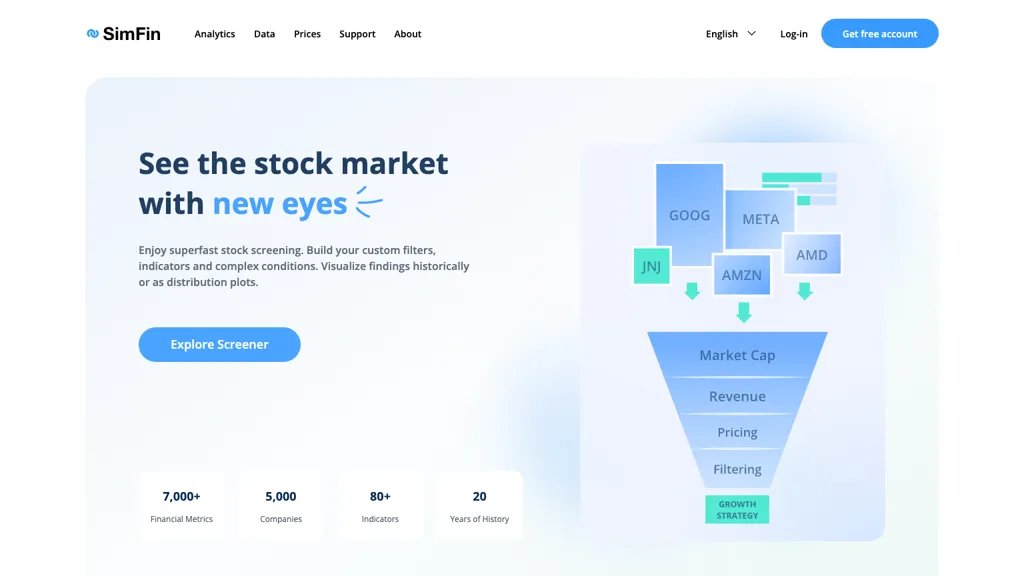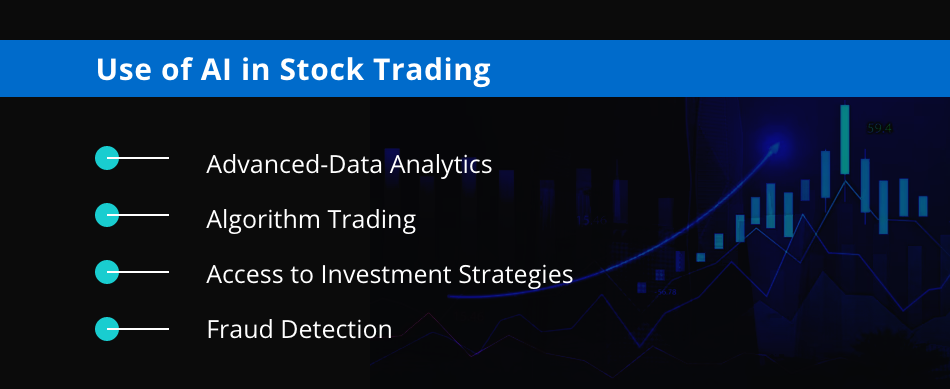20 Top Ideas For Selecting AI Stock Investing Platform Websites
20 Top Ideas For Selecting AI Stock Investing Platform Websites
Blog Article
Top 10 Suggestions For Evaluating Ai Trading Platforms Based On Their User Interfaces And Experiences
The User Interface (UI) and the User Experience (UX) of AI platforms for predicting and analyzing stocks are crucial to making sure that they are efficient, usable and overall satisfaction. A poorly designed interface will hinder your decision-making process, even when you have strong AI models. Below are the top 10 tips for evaluating UX/UI.
1. Assess the ease of use simple, intuitiveness and speed
Navigation: Ensure the platform is easy to navigate using clear menus, buttons, and workflows.
Learning curve: Identify how quickly users new to the platform can grasp and use a platform without any extensive training.
Make sure that there is consistency in patterns of design across different platforms (e.g. buttons and colour schemes, etc.).).
2. Check for Customizability
Dashboard customization: Find out whether the dashboard can be customized to display relevant metrics charts, data, or charts.
Layout flexibility: Ensure that the platform allows users to rearrange or resize widgets as well as charts and tables.
Themes and preferences. Find out if there are dark/light settings or other visual preferences.
3. Visualize Data
Chart quality: Check whether the platform offers interactive charts with zooming and panning functions (e.g. line charts or candlestick charts, etc.).
Visual clarity - Check to ensure that data is displayed clearly, using appropriate labels, legends or tooltips.
Real-time updates: Check if the visualizations automatically reflect developments on the market.
4. Test the responsiveness and speed
The loading time is important: Make sure the platform loads quickly, even when you are dealing with huge datasets or complex calculations.
Performance in real-time: Verify that the platform is capable of handling data feeds immediately without lag or delay.
Cross-device compatibility : Check if the platform is compatible with all devices (desktops mobiles, tablets, desktops).
5. The accessibility of the facility should be evaluated
Mobile app availability: Find out if the platform offers an app on mobile that includes complete functionality to trade on the go.
Keyboard shortcuts: Make sure your platform supports keyboard shortcuts for advanced users.
Accessibility Features: Verify whether the platform adheres to accessibility standards.
6. Review the search and filtering functionality
Search performance: Make sure the platform lets users swiftly look up indexes, stocks or any other asset.
Advanced filters: Find out whether the user is able to apply filters to narrow results (e.g. by sector, capitalization, performance metrics).
Saved searches: Check if you can save searches or filters that you frequently use.
7. Be sure to check for alerts or notifications
Alarms that can be customized: Make sure users are able to set up alerts for specific situations.
Notification delivery: Verify that alerts are being delivered via multiple channels.
Timeliness - Make sure whether alerts are sent out quickly and accurately.
8. Evaluate Integration with Other Tools
Broker integration: Ensure your platform seamlessly integrates with your brokerage account to allow easy trade execution.
API access: Check whether the platform provides API access to advanced users to develop custom tools or workflows.
Third-party integrations: Determine whether the platform allows integrations with other software (e.g., Excel, Google Sheets, trading bots).
9. Review Help and Support Features
Onboarding Tutorials: Check whether your platform has tutorials or guides for novice users.
Help center - Ensure that the platform includes an extensive support center or knowledgebase.
Customer support: Check whether you have a fast customer service (e.g. live chat, email, or phone).
10. Test Overall Test Overall
User feedback: Reviews and testimonials are used to gauge the overall satisfaction of users with the platform UI/UX.
Free trial period: Use the platform at no cost and test its functionality.
Examine error handling.
Bonus Tips
Aesthetics. The functionality is important, but a visually appealing layout can improve the user experience.
Performance under stress Test the platform under extreme market volatility to ensure that it is steady and responsive.
Check for active forums and communities. Users can share their tips and feedback in these areas.
Follow these tips to assess the UI/UX on AI stock predicting/analyzing platforms. This will ensure they are user-friendly and efficient. They should also be aligned with trading needs. A great UI/UX will enhance your ability to make informed choices and perform trades effectively. Check out the best ai for stock trading tips for blog info including investing ai, ai for stock trading, ai investing app, market ai, ai chart analysis, ai stock trading, ai investing platform, ai for stock trading, best ai trading app, ai trade and more.
Top 10 Tips For Risk Management Of Ai Trading Platforms That Forecast Or Analyze Stock Prices
Risk management is a vital aspect of any AI trading platform that predicts or analyzes stocks to protect your investment and limit potential losses. Platforms that are equipped with powerful risk-management tools will help you navigate turbulent markets and make informed choices. Here are 10 suggestions on how to assess the capabilities of the platform's risk management tools.
1. Review Stop-Loss and take-profit features
Levels that can be customized: Make sure the platform allows you to determine take-profit and stop-loss limits for individual trades or strategies.
Examine the platform to determine whether it has a trailing stop feature that will automatically adjust as the market shifts in your direction.
It is important to determine whether there are stop-loss options that can guarantee your position to close at the designated amount, even when markets fluctuate.
2. Calculate the Size of Position Tools
Fixed amount: Make sure the platform lets you determine the size of your position based on the fixed amount of money.
Percentage of Portfolio Find out whether it is possible to establish the size of your position as a percent of the total portfolio to control risk proportionally.
Risk-reward: Make sure your platform permits you to set risk-reward for each strategy or trade.
3. Look for Diversification Support
Multi-assets trade: Ensure that the platform supports trading across multiple asset categories (e.g. ETFs, stocks options, forex and more.) to diversify portfolio.
Sector allocation Check to determine whether there are any tools available for managing and monitoring sector exposure.
Diversification of geographic areas. Check if the platform is able to trade on international markets and spread geographic risk.
4. Examine the impact of leverage and margins
Margin requirements: Make sure the platform clearly discloses margin requirements for trading leveraged.
Find out if your platform lets you to limit leverage to limit risk exposure.
Margin calls: Verify if the platform provides prompt notifications of margin calls to prevent account liquidation.
5. Evaluation of Risk Analytics and Reporting
Risk metrics. Make sure your platform provides you with key risk indicators (e.g. VaR Sharpe Ratio, Drawdown) pertinent to your portfolio.
Scenario analysis: Ensure that the platform allows you to simulate different scenarios of the market to determine risks.
Performance reports: Find out whether the platform provides detailed performance reports that include risk-adjusted return.
6. Check for Real-Time Risk Monitoring
Monitoring your portfolio: Make sure that the platform offers real-time monitoring of the risk exposure to your portfolio.
Alerts and notifications: Examine the platform's ability to provide real-time alerts for events that may be risky (e.g. breaches of margins, Stop loss triggers).
Risk dashboards - Examine to see if the platform you are using offers customized risk dashboards. This will give you a better overview of the risks you are facing.
7. How to evaluate Stress Testing & Backtesting
Stress testing. Make sure your platform permits you to stress test the strategy or portfolio under extreme market circumstances.
Backtesting. Find out if the platform supports backtesting, which is the application of historical data to assess the level of risk and performance.
Monte Carlo simulators: Verify that the platform uses Monte Carlo to simulate a variety of possible outcomes so that you can determine the risks.
8. Assess Compliance with Risk Management Regulations
Regulatory compliance: Ensure the platform is compliant with applicable rules for risk management (e.g., MiFID II in Europe, Reg T in the U.S.).
Best execution: Ensure that the platform follows the best execution methods. It will guarantee that transactions are completed at the highest price possible in order to reduce loss.
Transparency Examine the transparency of the platform and transparency in the disclosure of risks.
9. Check for Risk Parameters that are controlled by the User
Custom risk rule: Make sure that your platform permits you to define custom risk management guidelines (e.g. the maximum daily loss, or the maximum size of a position).
Automated risk controls: Check whether the platform can automatically apply rules to manage risk according to the parameters you have set.
Check whether the platform permits manual overrides for automated risk controls.
Study Case Studies and User Feedback
User feedback: Review the opinions of users to evaluate the platform's ability to manage risk.
Case studies Look up cases studies or testimonials that show the platform's capability to control risks.
Forums for community members Find out if there is an active group of traders who share their tips and strategies for managing risk.
Bonus Tips
Free trial period: Try the risk management capabilities of the platform in real-world scenarios.
Customer Support: Ensure that the platform is able to offer a full support service in the event of any risk management-related issues or concerns.
Educational resources - Find out whether the platform provides educational resources and tutorials about risk management best practice.
By following these tips and techniques, you will be able to assess the potential risk managing capabilities of AI platform for analyzing and predicting stocks Be sure to select the one that can to protect your capital and limit the possibility of losses. To make trading successful and navigate volatile markets, robust risk management tools are crucial. Check out the top rated ai software stocks for blog info including how to use ai for stock trading, free ai tool for stock market india, best ai penny stocks, ai stock analysis, stocks ai, ai stock analysis, stocks ai, ai software stocks, best ai stocks to buy now, best ai for stock trading and more.